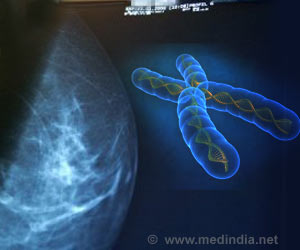
‘Guidelines are not being followed to ensure that breast cancer screening of high risk women is done properly.’
Tweet it Now
According to Deirdre A. Hill of the University of New Mexico School of Medicine in the US, this signals a missed opportunity to use technology that can help detect breast cancer early in high-risk groups. She led a study in the Journal of General Internal Medicine which is published by Springer. Since the first guidelines were issued in 2007, MRI is increasingly used to further screen for the signs of breast cancer after mammography. The American Cancer Society, the American College of Radiology and the Society of Breast Imaging all recommend these to women who have a 20 percent or more chance of contracting the disease. The use of MRI scans for women in the high-risk group has led to better detection rates compared to when mammograms are used alone.
Data were analyzed from the Breast Cancer Surveillance Consortium (BCSC), a breast imaging network that collects information on risk factors, imaging and, cancer diagnoses including pathology of women who are screened. Among the 348,955 women in five regional BCSC regional registries who received mammograms, 1499 also underwent MRI scanning. Hill’s team considered the chances of a woman receiving MRIs together with factors such as her family history of breast cancer and other breast cancer risk factors.
The study’s findings show that screening MRI in community settings is not used according to current professional guidelines. Approximately 82,9 percent of screening MRIs were done on women who did not meet the professional guidelines. Of these women, 35,5 percent fell in the low to average risk group. In contrast, only a fraction of the women who met professional guidelines for additional screening MRI received this service.
"Our data suggest that women with less than 20 percent lifetime risk based on family history, but who have high breast density, breast atypia, or abnormal cell growth called lobular carcinoma in situ undergo MRI at many times the rate of other women, although the harms and benefits in this population are uncertain and the cost-benefit ratio may exceed established benchmarks," Hill explains. "Such women may not be at substantially increased risk of cancers missed by mammography and thus may not be the groups in greatest need or who would receive the greatest potential benefit of screening MRI."
Advertisement
Source-Eurekalert















